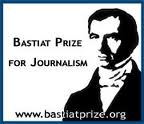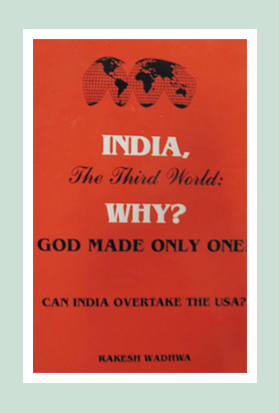This is the Only Real Reason for Inflation

When President Donald Trump announced his tariff policy, the loudest objections were focused on this sparking inflation. There seems to be a broad agreement that tariffs will push the US economy back to dangerously high inflation levels. Such headlines have polluted basic economics.
I’m not an advocate of tariffs, but it cannot be blamed for inflation. I have heard many people expressing the same concern, especially around inflation in the US. But when I ask, “what causes inflation?”, most people don’t know the answer. Are tariffs the main culprit? No. There is only one single, simple reason for inflation.
Debunking Inflation Myths
When prices go up, people often blame different things. They point to tariffs, greed of companies, and even supply chain problems.
Tariffs do make things more expensive, as these taxes are passed onto consumers. But to think that tariffs will make everything more expensive is a flawed idea. Tariffs only affect the price of a specific item, not the overall price level of all goods and services available in an economy. When the price of a certain item goes up, it’s demand will fall, pushing prices lower. Let’s say the demand cannot fall because the item is a necessity. People will spend more on it. That inherently means that they will spend less on other items because their income has not changed.
For instance, a tax on imported cars makes cars more expensive. But it doesn’t cause the price of clothes to rise. The money a person spends on the more expensive car is money they can’t spend on new clothes. This reduces demand for new clothes, exerting pressure on prices in the apparel industry.
With no change in the amount of money in an economy, tariffs can’t cause inflation. Yes, you can blame Russia for starting a war that forced some nations to levy sanctions that led to high energy prices. But let’s not forget the real reason for inflation.
The Single Cause of Inflation
The only real cause of sustained, widespread inflation is the printing of money. When a government or central bank prints new money, it adds more cash into the economy.
Imagine an economy with a fixed amount of goods and services. Now, imagine a sudden increase in the money supply. When everyone has more money to spend, they will want to buy more things. The demand for goods and services will go up. But the amount of goods and services available is still the same. Businesses will then raise their prices because they know people are willing to pay more. This is because there is now “too much money chasing too few goods,” as Milton Friedman puts it. The value of each unit of money falls. This general increase in prices is the very definition of inflation.
Money Supply-Related Inflation Through History
History tries to teach us lessons over and over again. After World War I, the German government faced huge debt and war reparations. They started printing huge amounts of money to pay their bills. The result was hyperinflation. Prices rose so fast that people used wheelbarrows full of cash to buy a loaf of bread. The currency became almost worthless.
In the early 2000s, Zimbabwe’s government printed money to fund its involvement in a war and pay government workers. This led to a complete economic collapse. Prices doubled every day, and the country had to print a 100-trillion-dollar banknote!
More recently, Venezuela has been a clear example. The government printed money to pay for social programmes and government debt. This led to one of the worst hyperinflation crises in history. People’s savings were wiped out. The Venezuelan bolivar became so devalued that people weighed stacks of cash instead of counting them.
That brings us to the inflation in the US during the pandemic. The US injected trillions of dollars into the economy through direct payments to individuals and expanded unemployment benefits. The CARES Act and American Rescue Plan increased household incomes, even for those who lost jobs. This gave people more money to spend.
Plus, the Federal Reserve bought government bonds to pump more money into the financial system.
This created a sudden surge in aggregate demand, which outpaced the ability of businesses to supply goods, pushing prices up. The combination of strong demand (fueled by stimulus) and constrained supply (due to pandemic disruptions) led once again to “too much money chasing too few goods.”
These examples show that inflation is not caused by wars, tariffs, or supply chain issues. Those can affect prices in the short term, but they do not cause sustained and widespread price increases. The only thing that does is an increase in money supply.
Yet Governments Must Keep Printing Money
So why do governments keep printing money if it’s so dangerous? The main reason is to fund their spending.
Governments often choose to print money to avoid difficult political choices. A large part of the funds is used to run the government. Some of it is used to fund government projects, pay for wars, and repay existing debt. This is a tempting but dangerous short-term solution. However, the long-term result is always the same: the value of the currency goes down and prices go up for everyone. It’s like a hidden tax on the entire population.
 Rakesh Wadhwa. Ever since, I was a school boy, I knew India was on the wrong path. Socialism was just not what we needed to get ahead. Government controlled our travel; government controlled our ability to buy and sell; and government controlled our freedom to move our money. My life has focused on the inherent rights people have. When I was in college, I never understood, what the governments meant by their "socialistic attitude". If people are free to buy, sell and move their capital themselves without any restrictions by state, then the welfare of people is inevitable & hence the countries they live in will become wealthy. The government has no right whatsoever, to point a finger at me or my business. I am not a revolutionary. I just want to light up my cigarette and not get nagged about it. I believe in non-interfering attitude to attain more.
Rakesh Wadhwa. Ever since, I was a school boy, I knew India was on the wrong path. Socialism was just not what we needed to get ahead. Government controlled our travel; government controlled our ability to buy and sell; and government controlled our freedom to move our money. My life has focused on the inherent rights people have. When I was in college, I never understood, what the governments meant by their "socialistic attitude". If people are free to buy, sell and move their capital themselves without any restrictions by state, then the welfare of people is inevitable & hence the countries they live in will become wealthy. The government has no right whatsoever, to point a finger at me or my business. I am not a revolutionary. I just want to light up my cigarette and not get nagged about it. I believe in non-interfering attitude to attain more. 
 The Bastiat Award is a journalism award, given annually by the International Policy Network, London. Bastiat Prize entries are judged on intellectual content, the persuasiveness of the language used and the type of publication in which they appear. Rakesh Wadhwa won the 3rd prize (a cash award of $1,000 and a candlestick), in 2006.
The Bastiat Award is a journalism award, given annually by the International Policy Network, London. Bastiat Prize entries are judged on intellectual content, the persuasiveness of the language used and the type of publication in which they appear. Rakesh Wadhwa won the 3rd prize (a cash award of $1,000 and a candlestick), in 2006.
What the readers are saying…